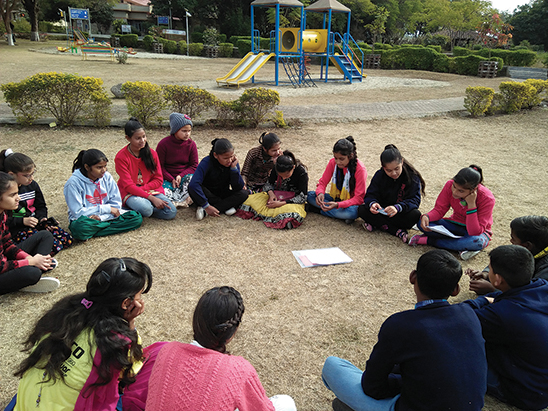
Swami Rama Tirtha said of the hero of Ramayana, Rama, that when he started to regain Sita, which represents Divine Knowledge, all nature offered services to Him. Monkeys, geese, squirrels and even stones, air and water vied with one another to enlist on his side.
Swami Rama in his epic book Ramayana dwelt on the heroine of the epic, Sita, where to quote him: “In the sacred hymns of the Rig Veda, Sita is enjioned as the goddess of the field furrow, which yields crops for human beings. This simple conception of Sita is overlooked in the epic. To the millions of men, women and children of India, Sita is not an allegorical figure, but lives eternally in the hearts of all, where she dwells simultaneously as a model of the virtuous wife, an embodiment of womanly devotion, and an example of self-sacrifice. Even Valmiki failed to create a complete picture of Sita in the epic, for Sita’s nature is somehow inexplicable. The moral picture she provides is unmatched and cannot be painted on any canvas. Indeed, the Aryans, particularly women, are proud of the great Sita and revere her. For them, the virtuous and faithful Sita, who suffered such adversity yet remained true, is a guiding star and model for their own lives.” Swamiji speaks of the journey he undertook in his youth with another child sage Nantin Baba to verify the historical authenticity of Rama’s journey to the south, treading the same path.
Starting from the picturesque Chitrakut (in current Uttar Pradesh) they travelled through the thick jungles of central India (current Madhya Pradesh and Chattisgarh) towards Sarabhanga. Their routine was set, a few hours rest after the noon meal (which consisted of roots they boiled and ate), recitation of Ramayana hymns morning and evening and meditation throughout the night. The rest was arduous travel by foot following the ancient trail and treading the same path as Rama, most of the time observing silence. They crossed Panchavati, which then was infested with deadly poisonous snakes. They also encountered many wild animals like tigers and boars.
In the Nilgiri mountains, they stopped at Ooty or Udakmandalam and visited Goodlur, Coimbatore and surveyed the entire area, including the community called Torah, the inhabitants who are unusually tall, handsome and healthy people who liked to live close to nature and whose menfolk wear long hair and beards. Nantin Baba and Swami Rama observed their way of life and imagined that perhaps they were the descendants of the great King Sugriva of the banar race mentioned in the Ramayana.
Subsequently, they visited Lanka (now known as Sri Lanka) covering the entire island which was beautiful and mountainous. They could not locate such historical places as the Ashoka Grove or Bibhishana’s dwelling. But there Swamiji was able to obtain a rare manuscript called Kumbhakarna Ramayana, a book on yogic sciences particularly on the techniques of sleep and samadhi. Then they wound back to the Himalayas, convinced of the historical authenticity of the Ramayana.
A few years before Swami Ram dropped his body the verse translation of Valmiki Ramayana was brought out in English. It was done with the spirit of joy and devotion towards the ancient culture of India as Ramayana forms the very basis of the moral instruction of the Indian nation. As Swami Rama says ultimately, Truth remains the guiding star for all of us.
